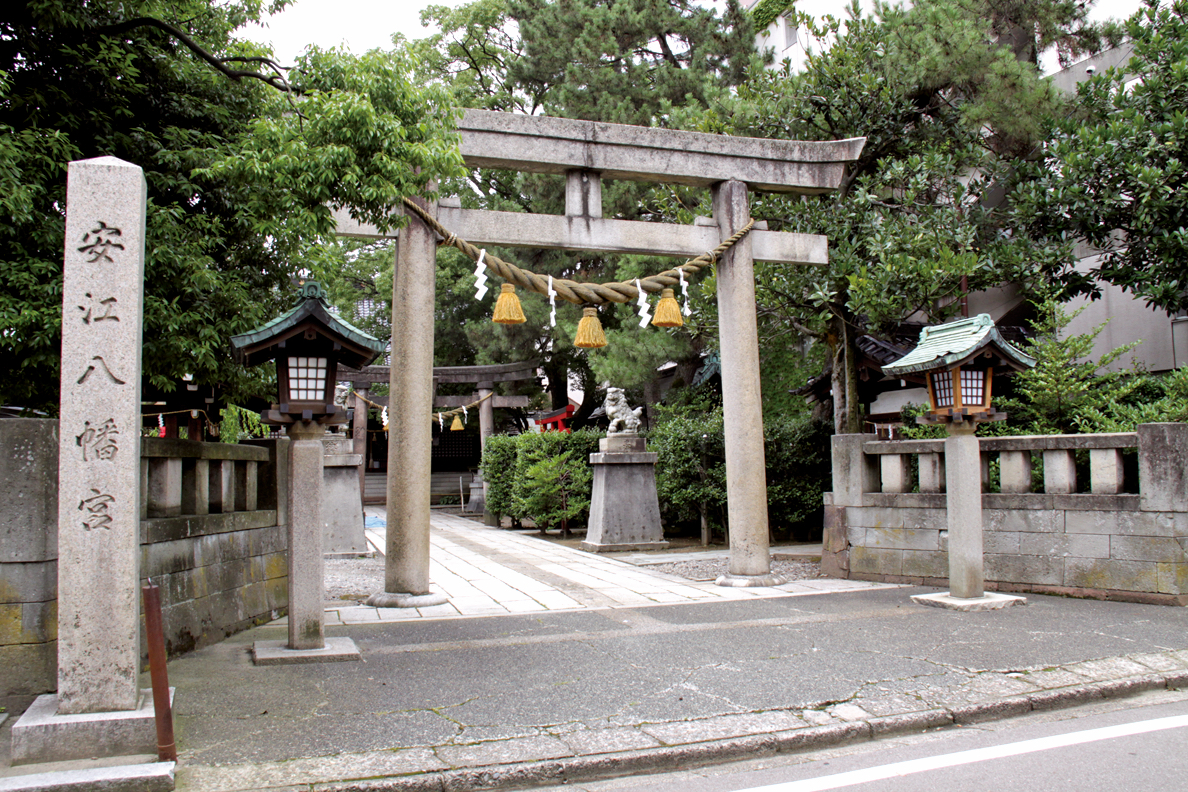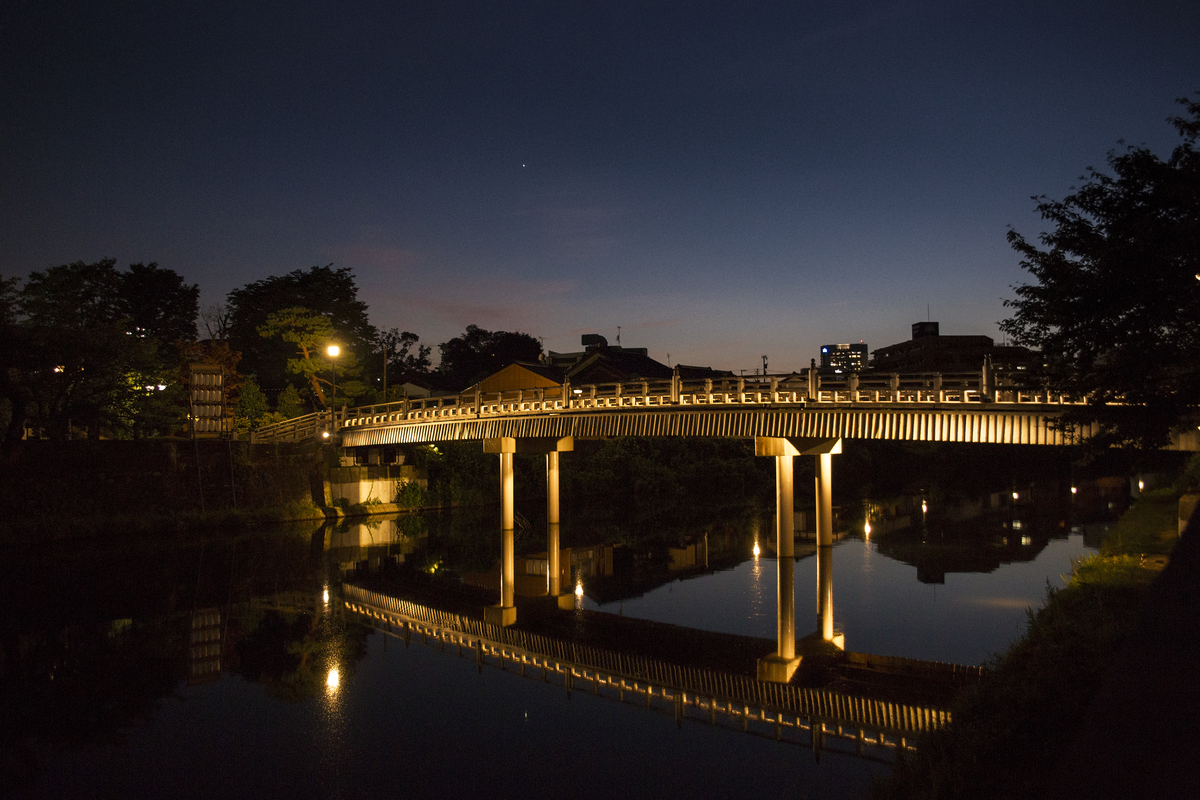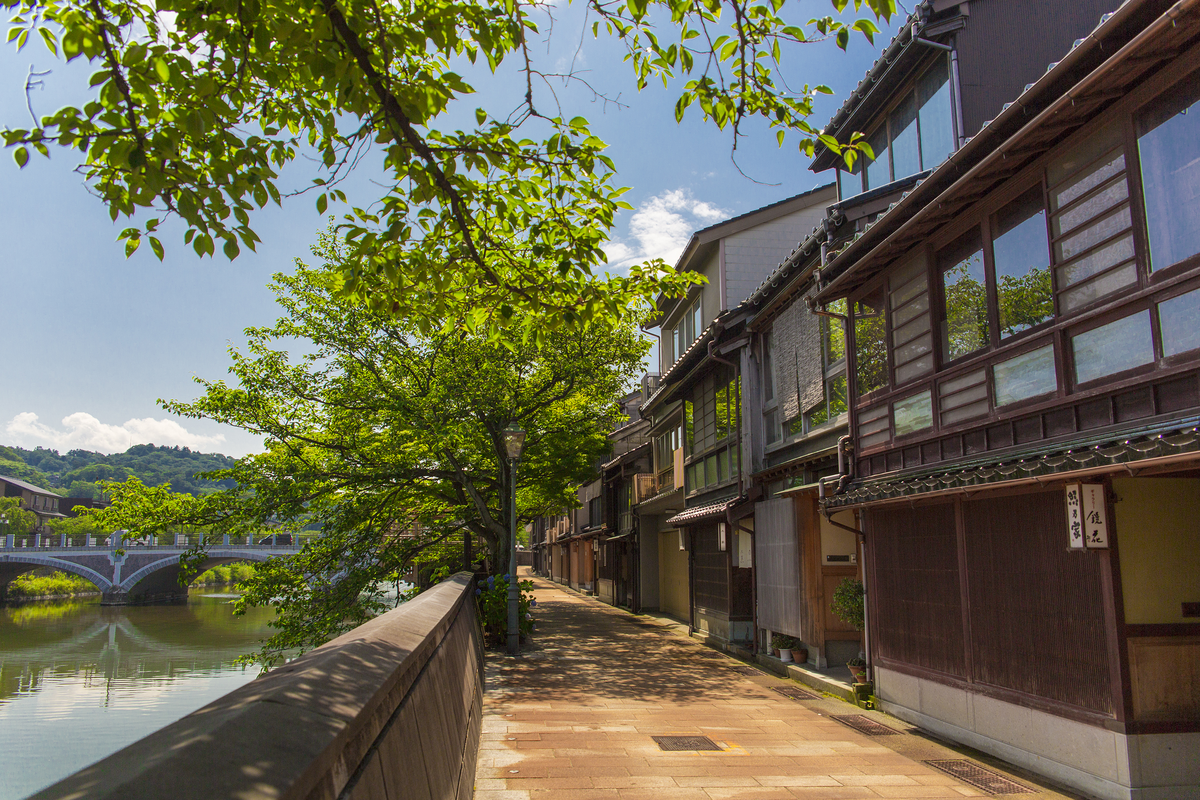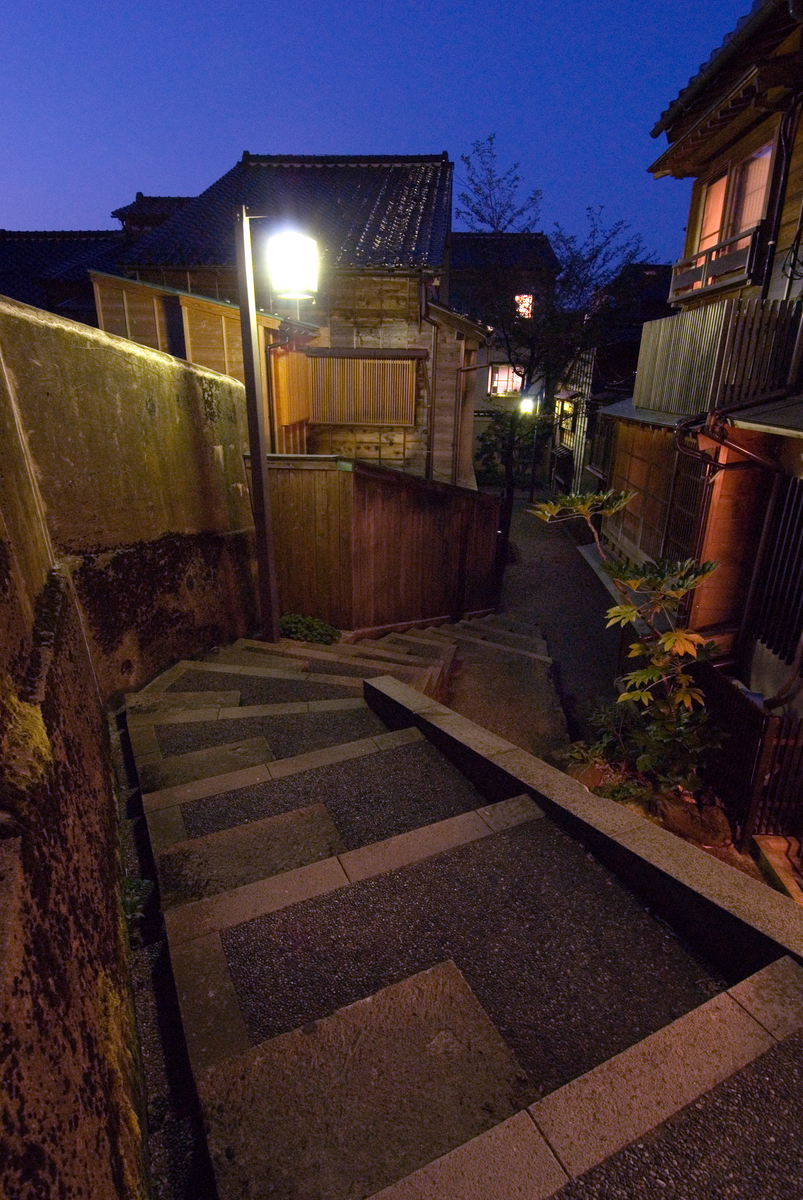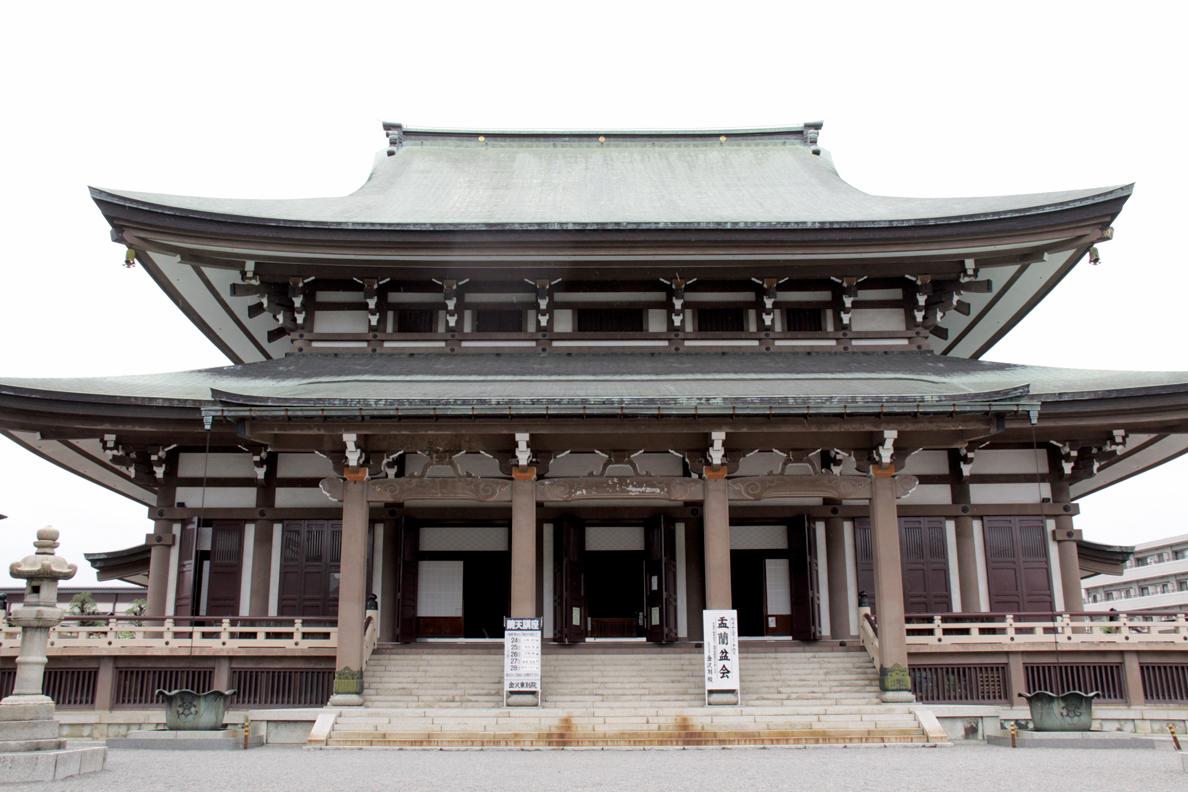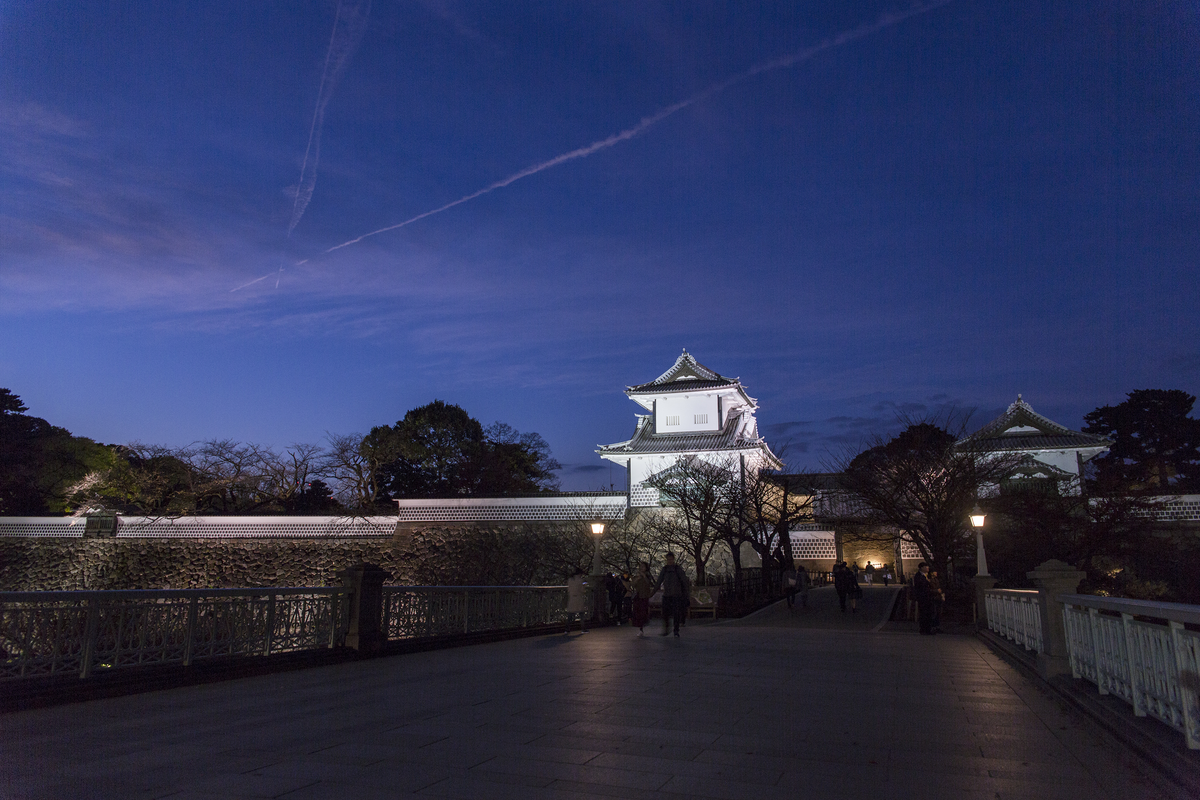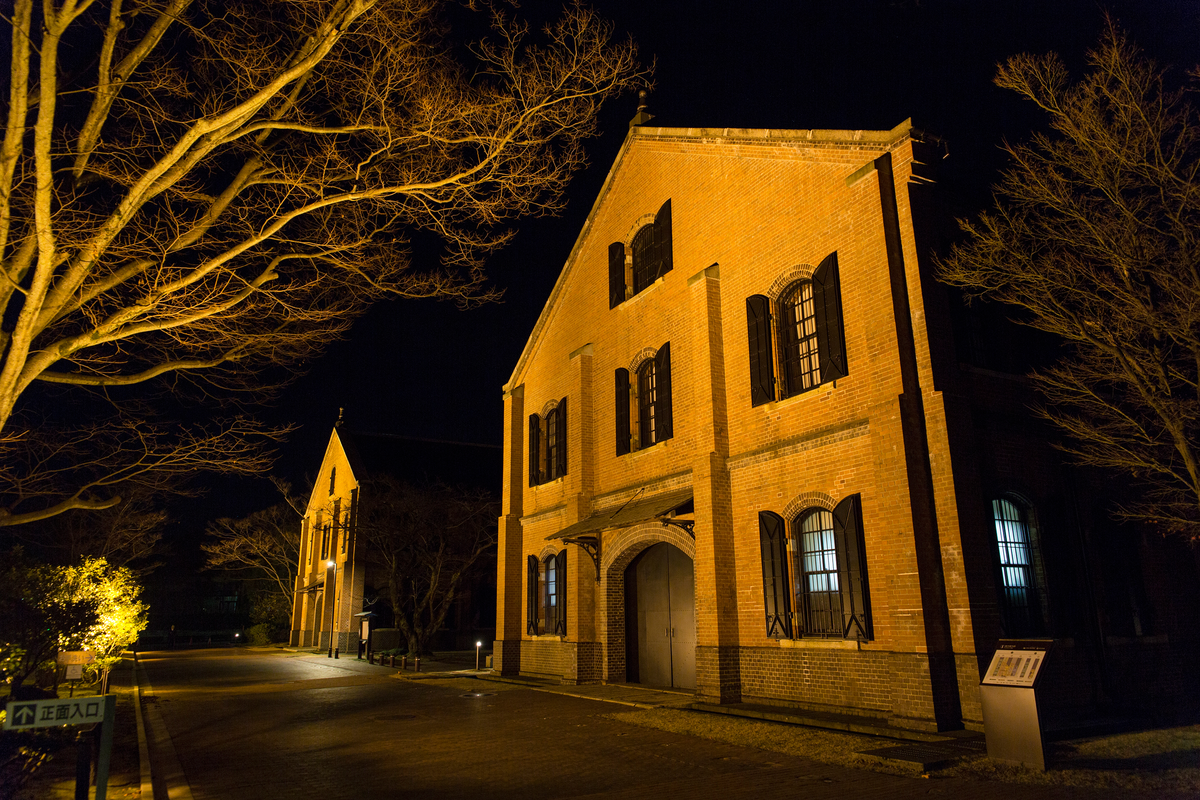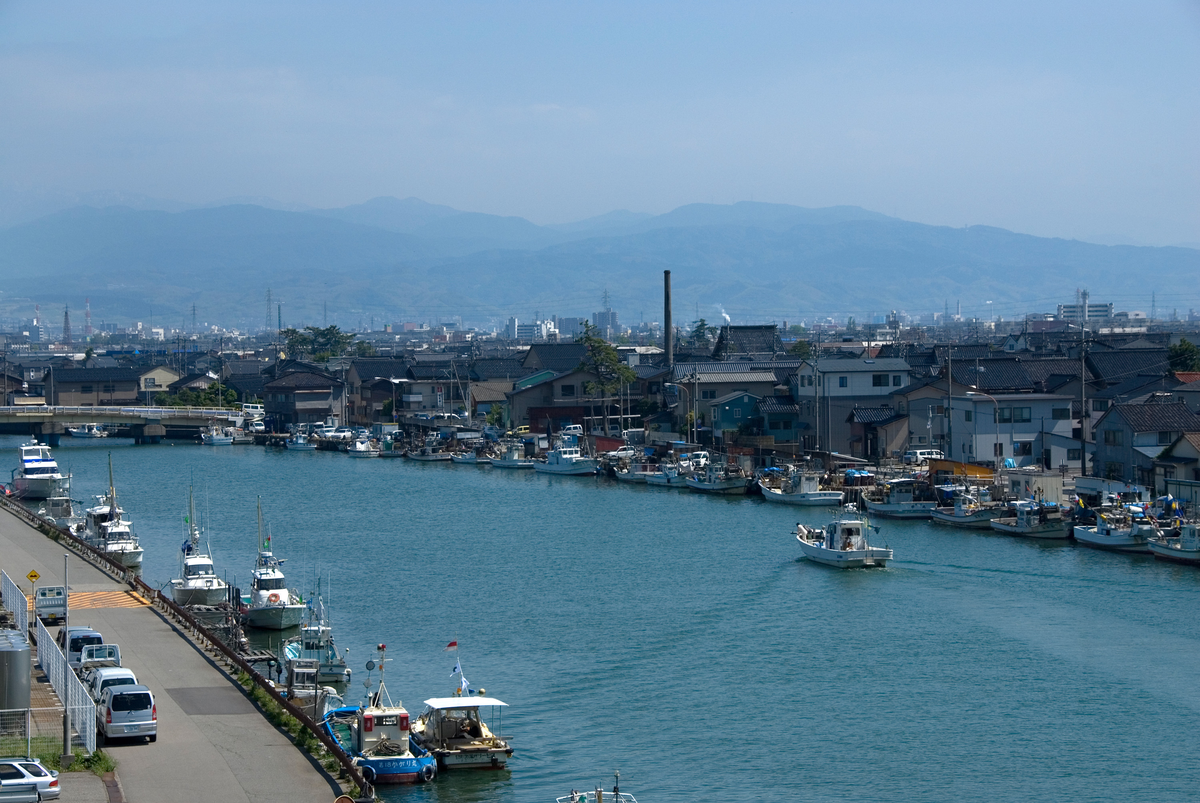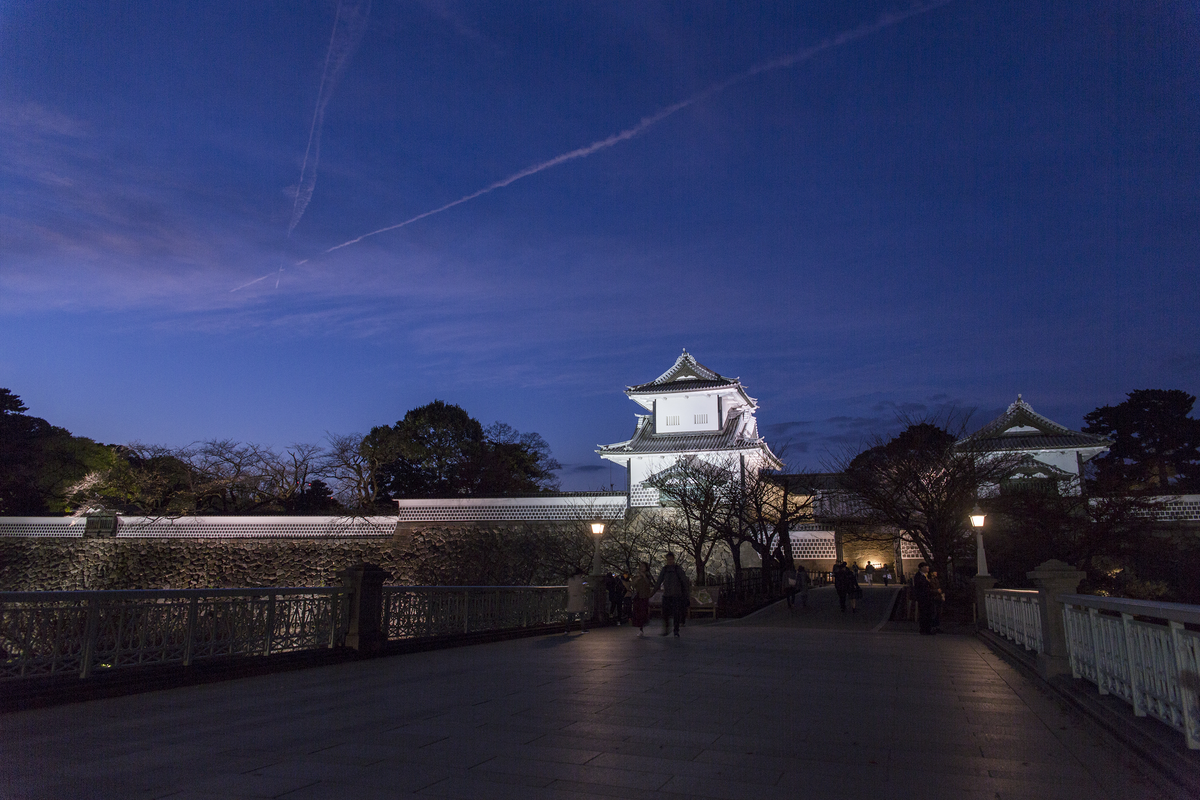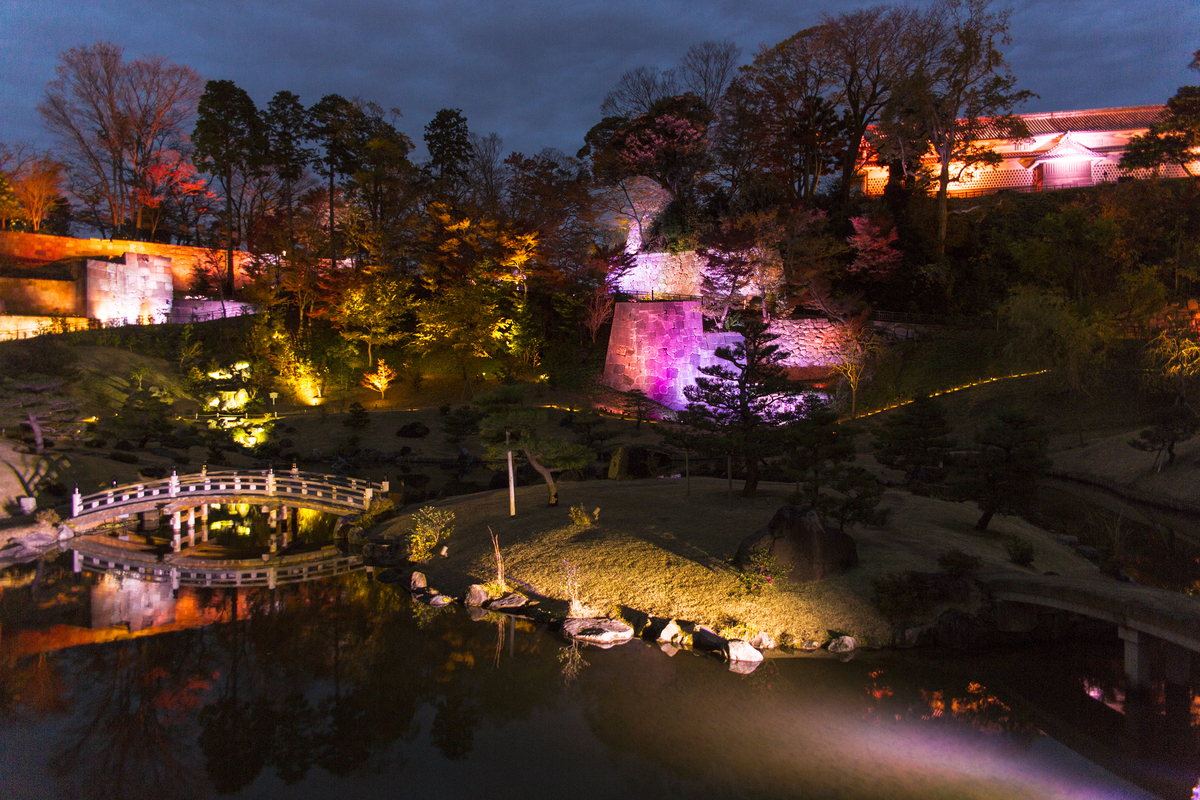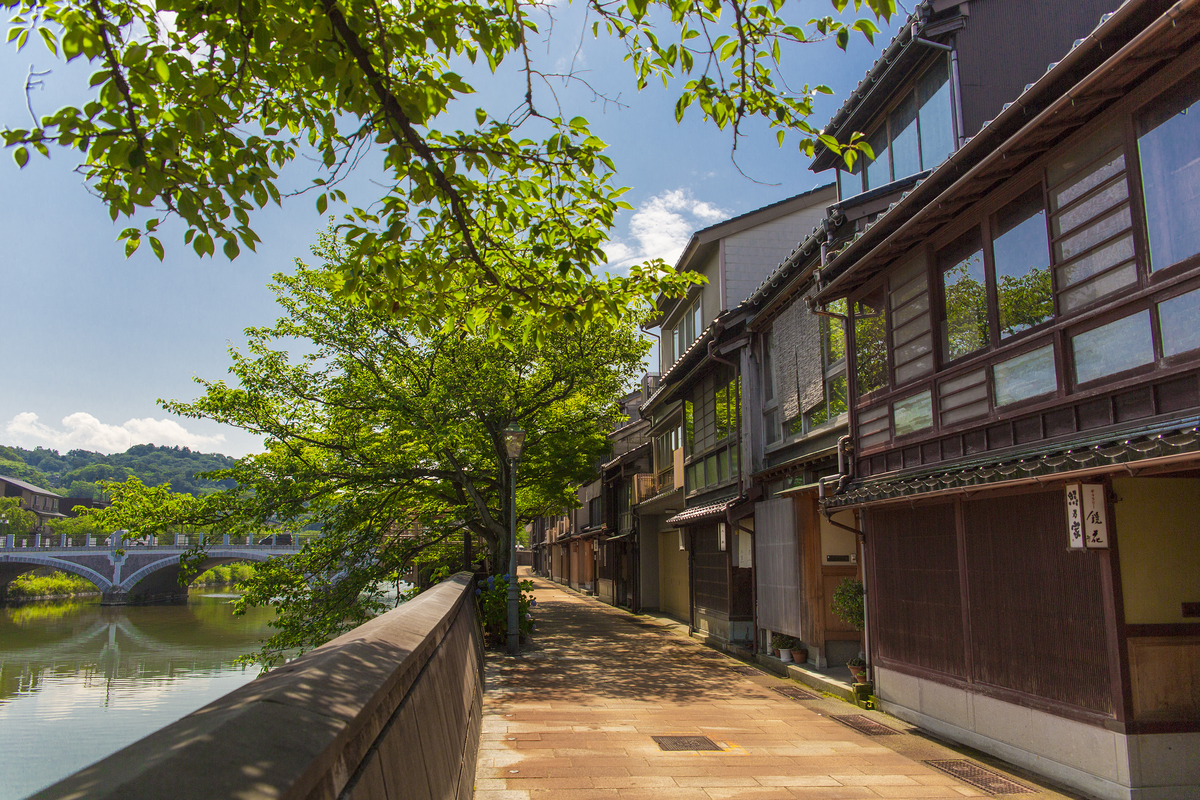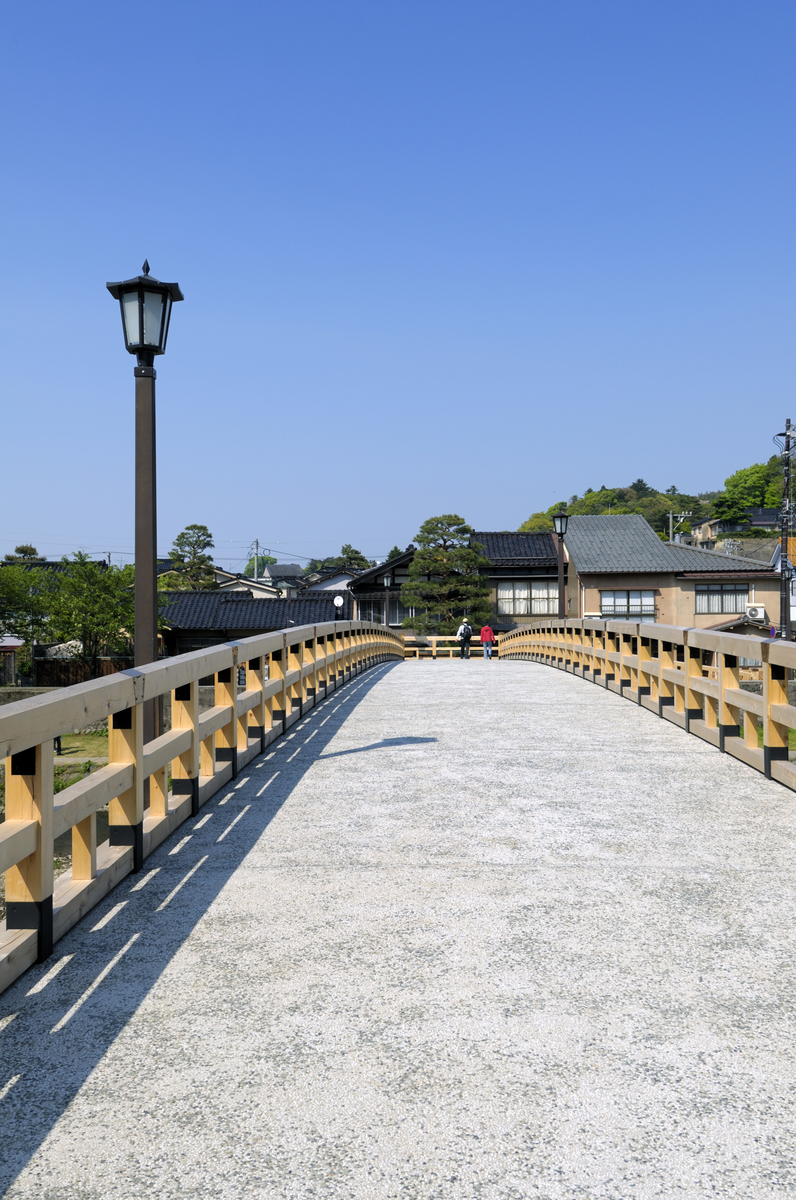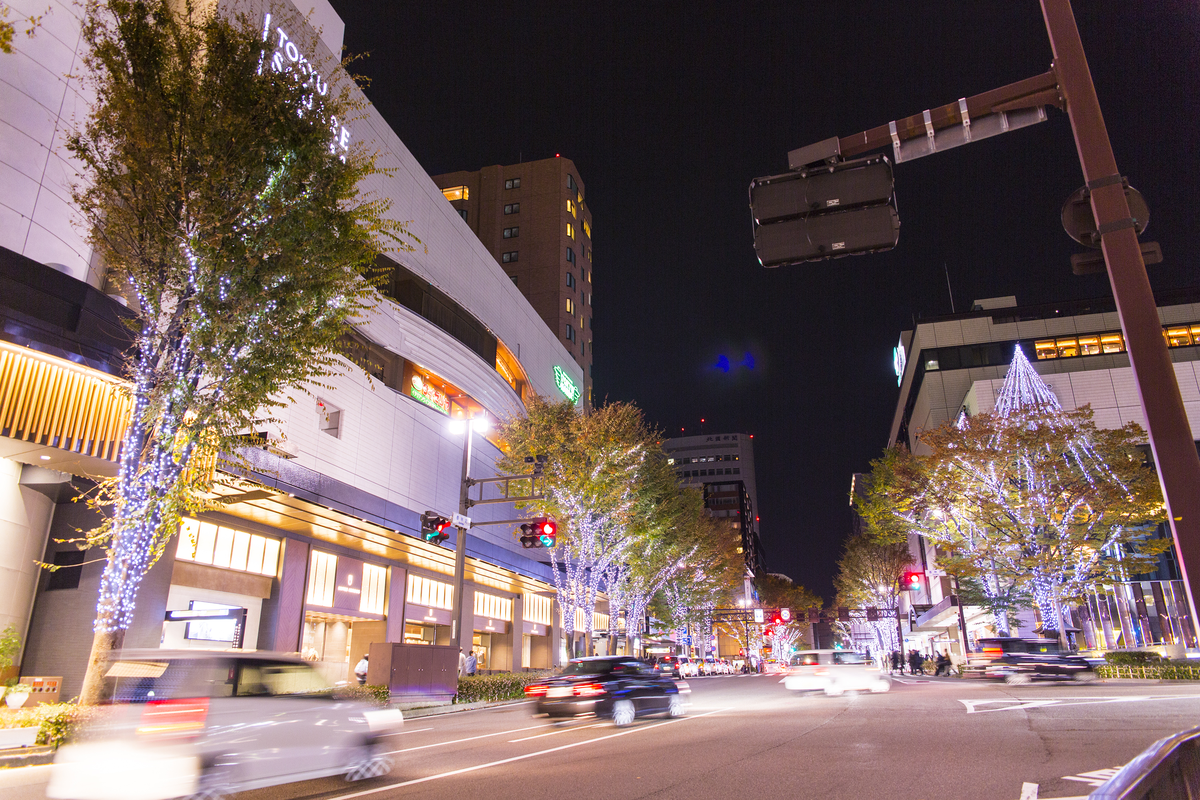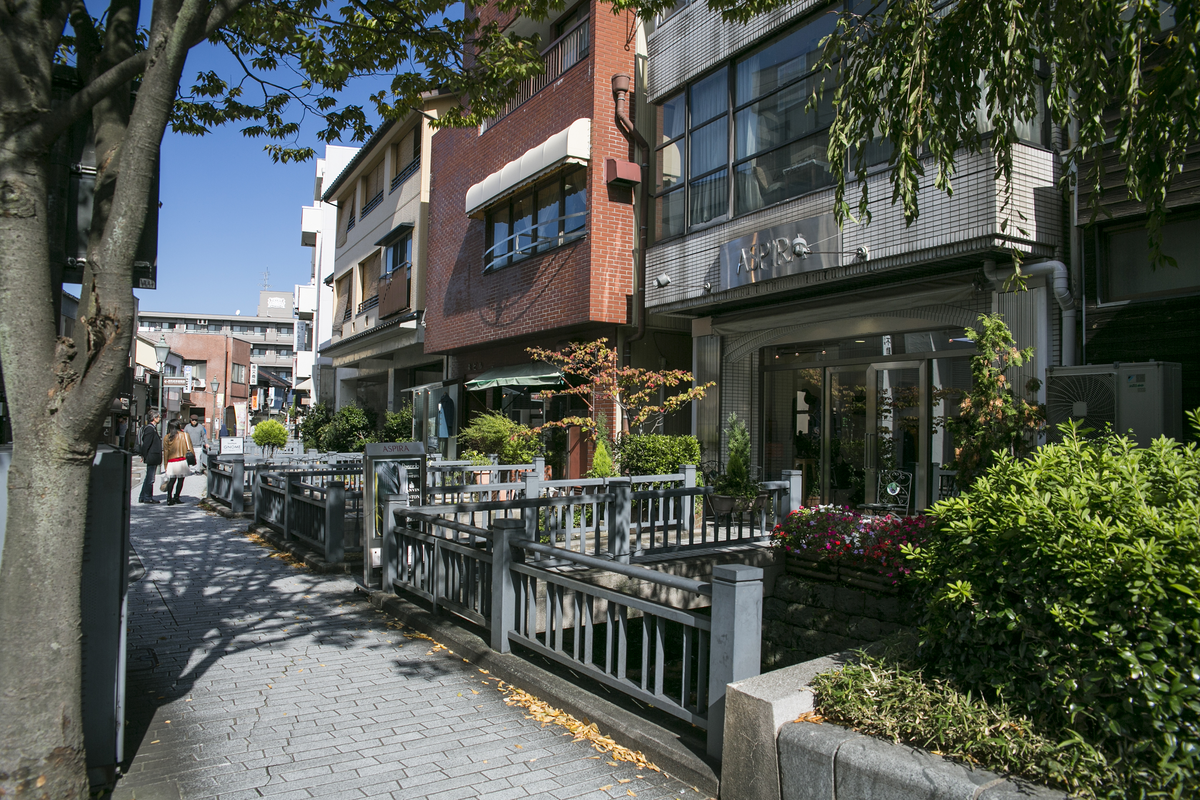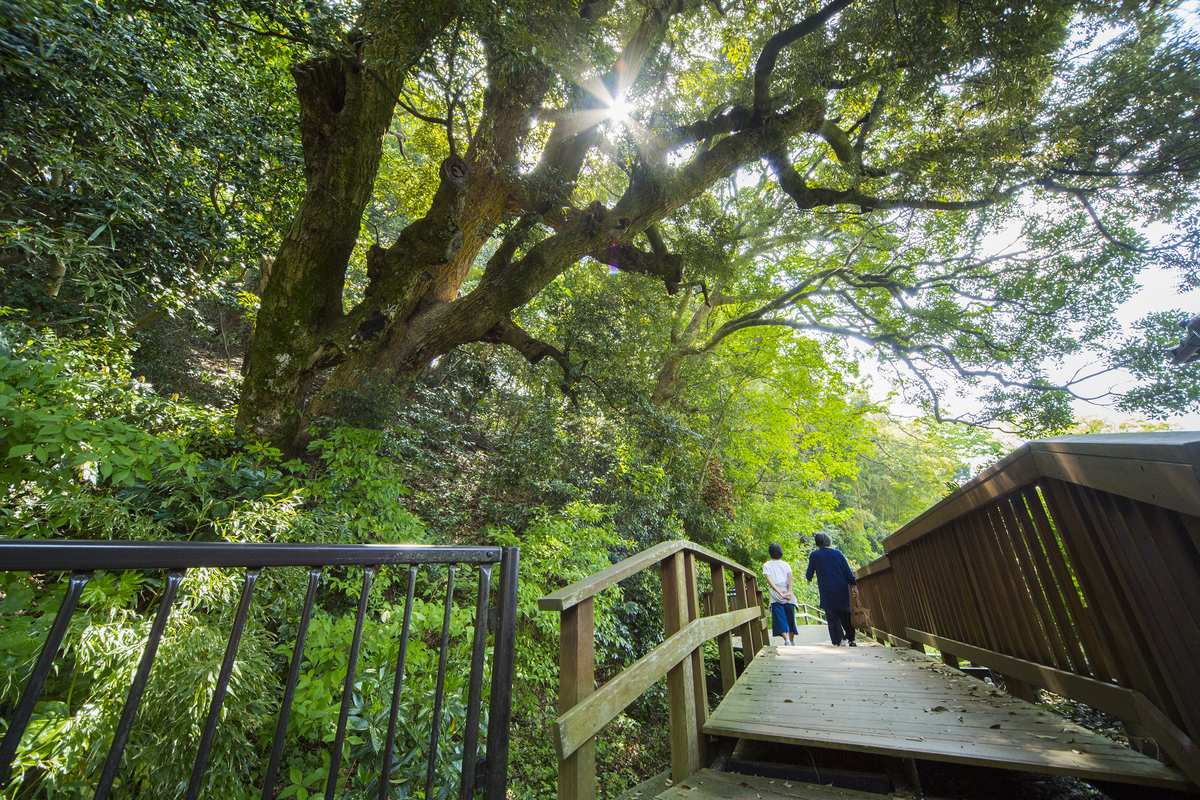04_Kanazawa Jog Navi
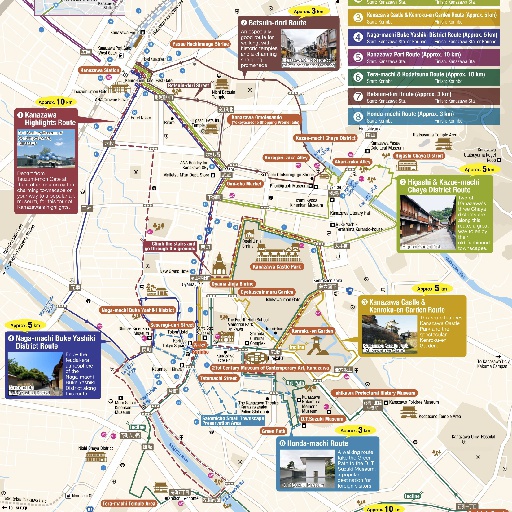
Check out these maps from Kanazawa, aimed to make your trip more fun by using your smartphone! Not only will you find sightseeing spots and recommended walking/jogging routes, but you can travel back to the Edo period and explore the changes. Don't worry about getting lost, as you will be able to see your GPS location at all time while enjoying the local charm of Kanazawa.
 Posted byJTB-mapperUpdated:
Posted byJTB-mapperUpdated: All spots information
36 spots
 7.Route7
7.Route7
 6.Route6
6.Route6
1.Tera-machi Temple Area
![]() 6.Route6
6.Route6
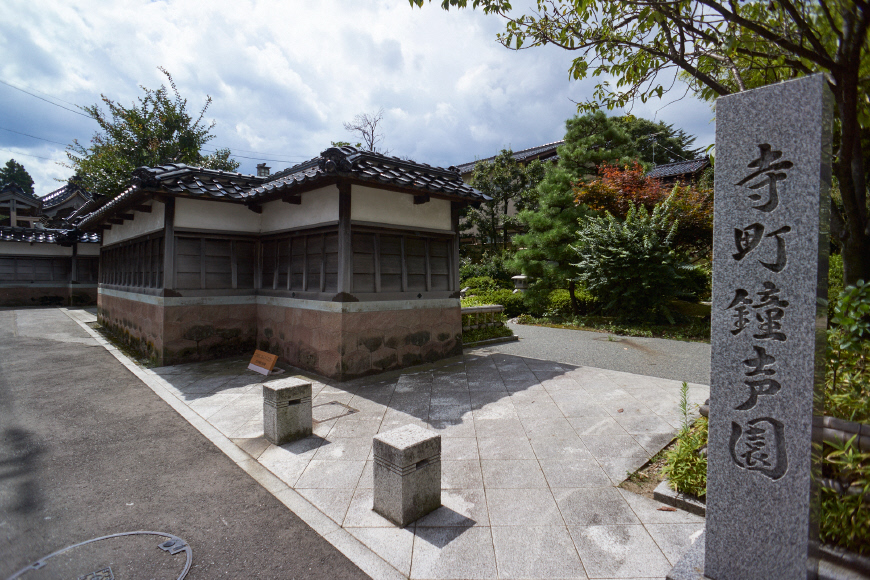
One of the Three Temple Districts of Kanazawa The Maeda family, who ruled the Kaga Domain (the present Ishikawa and Toyama areas) in feudal times, gathered temples in three areas when the family built the castle town. Approximately 70 temples are located close together in the Tera-machi Temple Area. Comparatively big temples are located in line along the main street, and the view of the black roof tiles and mud walls of the temples and the big trees in the precincts is a scene suitable to the name of Tera-machi (literary means "temple town"). The back street is dotted with small temples, where you can enjoy a quiet walk. Address1-2-12 No-machi --> URLhttp://www.kanazawa-kankoukyoukai.or.jp/course/temples/shizune/index_en.html Business Hours9 am to 4:30 pm (until 4 pm in winter season) *A reservation by telephone is required. ClosedJanuary 1, Buddhist service days Admission FeeAdult : 1000 yenschoolchild: 700 yen -->
4.D.T. Suzuki Museum
![]() 6.Route6
6.Route6
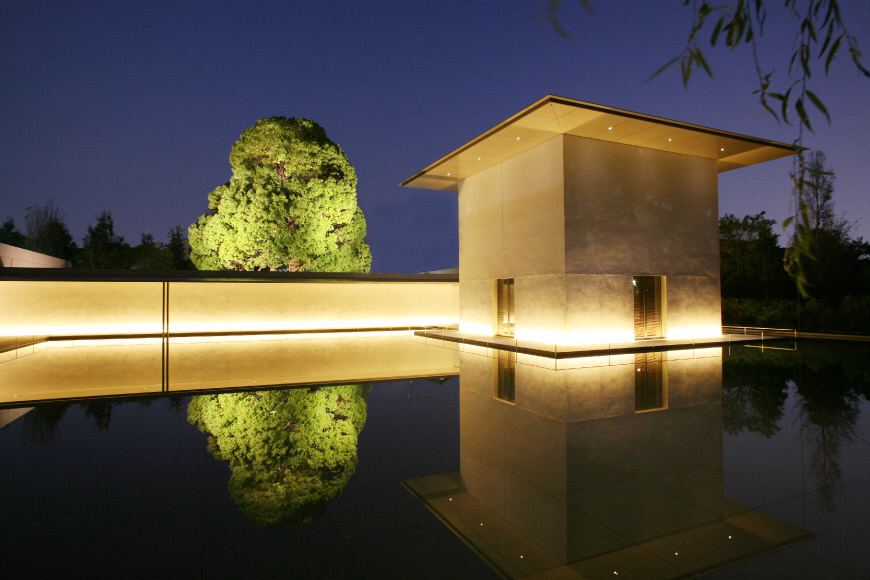
Daisetz Suzuki, known internationally as D.T. Suzuki, is a Kanazawa-produced buddhist philosopher. The museum building is located next to his place of birth, and comprises three wings: the Entrance Wing, the Exhibition Space Wing, and the Contemplation Space Wing, and three gardens: the Vestibule Garden, the Water Mirror Garden and the Roji Garden. In addition to the appreciation of the exhibits, the museum also serves as a place of reflection for visitors as they encounter the life and philosophy of Daisetz Suzuki. Address3-4-20 Honda-machi URLhttp://www.kanazawa-museum.jp/daisetz/english Business Hours9:30 am to 5 pm (Visitors must enter by 4:30 pm) ClosedMondays (Next day if Monday falls on a holiday) and Dec. 29 to Jan. 3, Preparation periods of exhibit change. Admission Fee Adult : 300 yen; group (20 persons min.) : 250 yen per person; person of 65 years old or over : 200 yen; person below high-school age : Free
2.Tentokuin Temple
![]() 6.Route6
6.Route6
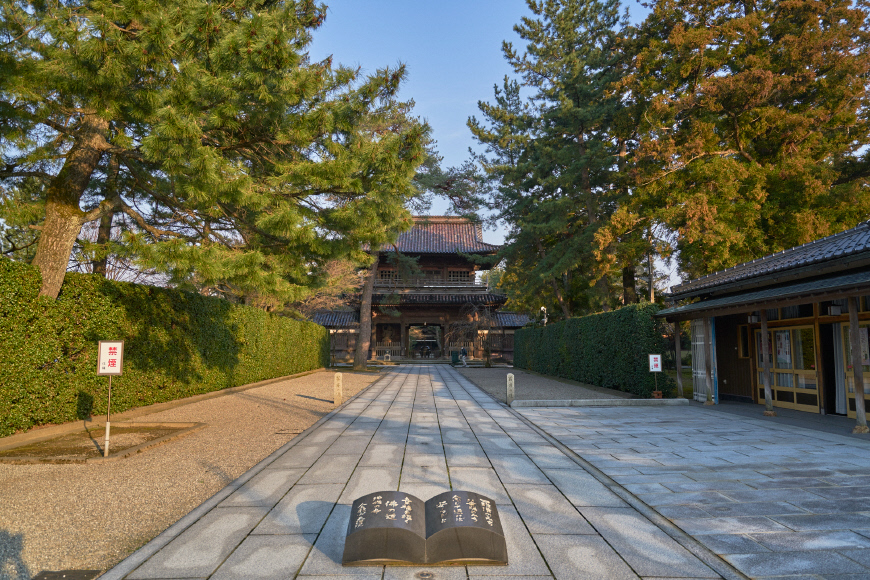
Maeda Toshitsune, the 3rd Lord of the Maeda family, married to Tamahime, a granddaughter of Tokugawa Ieyasu (the first shogun) in order to keep good a relationship with the central government (Tokugawa Shogunate). Tentokuin Temple was constructed as the family temple of Tamahime in the first half of the 17th century. The solemn gate of the temple that has been maintained since the time of foundation is a highlight. A visit inside the building is charged, and visitors can enjoy a story of Tamahime played with fancy dolls inside the temple. Address4-4-4 Kodatsuno URLhttp://tentokuin.arunke.biz Business Hours 9 am to 4:30 pm (until 4 pm from December to February) ClosedWednesdays from Dec. to Feb., Dec. 29 to Jan. 3 Admission FeeAdult : 500 yen junior high school student: 300 yen schoolchildren: 200 yen *A 10% discount for a group of 30 or more people.
 5.Route5
5.Route5
 4.Route4
4.Route4
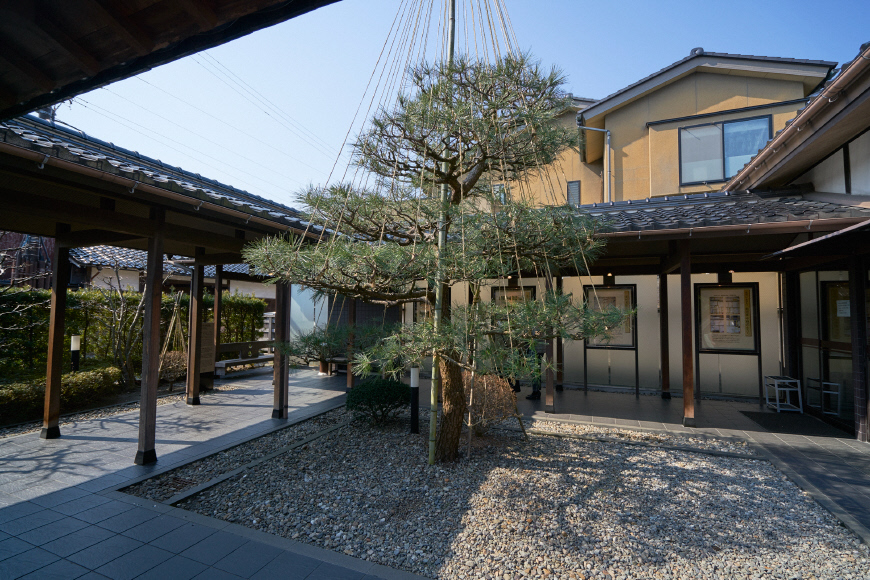
The institution surrounded by mud walls is rest facilities for tourists, and provided with a lobby and restrooms. Sightseeing volunteer guides stand by here and guide visitors (in Japanese only) around the Naga-machi samurai (feudal powerful military class) residential areas. Address2-4-36 Naga-machi Business Hours9:00 am to 5 pm ClosedOpen 365 a year Admission FeeFree

The remains of the Nomura family are also open to public. The family successively held executive posts from generation to generation under rule of the Maeda family. The house has a coffered ceiling totally made of Japanese cypress and fusuma-e (paintings on sliding-door panels) created by the Maeda family's personal painter. The garden inside the residence has a Japanese bayberry over 400 years old and a meandering stream surrounded by ancient and strangely shaped rocks. Address1-3-32 Naga-machi URLhttp://www.nomurake.com/ Business Hours8:30 am to 5:30 pm (until 4:30 pm from October to March) ClosedDec. 26 to 27 Admission Fee Adult: 550 yen; high school student: 400 yen; junior high school student and schoolchild: 250 yen; a 50 yen discount for a group of 20 or more people
3.Oyama Jinja Shrine
![]() 4.Route4
4.Route4

The shrine that enshrines Maeda Toshiie was moved to the present location in 1873. The main gate is a peculiar mix of traditional Japanese, Chinese, and European religious architectural elements. This gate, which was designated as Japan's important cultural assets, was completed in 1875. One of the highlights of Oyama Shrine is the garden in round-the-pond style with an artificial island and bridge in the images of old musical instruments, such as the biwa (Japanese short-necked fretted lute). Address11-1 Oyama-machi URLhttp://www.oyama-jinja.or.jp Business Hours9:00 am to 5 pm ClosedOpen 365 a year Admission Fee Adult: 550 yen; high school student: 400 yen; junior high school student and schoolchild: 250 yen; a 50 yen discount for a group of 20 or more people -->
4.Omi-cho Market
![]() 4.Route4
4.Route4

The Omi-cho Market was established about the middle of the 18th century. Since then, it has been supporting the gastronomic culture of Kanazawa for more than 280 years. There are as many as 170 stores including a large number of fish stores that sell fresh fish and seafood caught in the Sea of Japan, vegetable stores that sell unique Kaga vegetables, fruit stores, dried food and marine product stores, grocery stores, and clothing stores besides restaurants. Crabs, yellowtail, and small shrimp from the Sea of Japan that are sold around November, in particular, are highly evaluated in Japan. The market is crowded with residents and tourists during the season. More than 10 tenants including restaurants and drugstores are in operation in the redevelopment building named Omi-cho Ichibakan. AddressAokusa-machi and its vicinity Contact Omi-cho Market Promotion Association URLhttp://ohmicho-ichiba.com Business Hours9 am to 5:30 pm (varying with each store) ClosedNational holidays, Jan. 1 to 4, and around Aug. 15 Admission FeeFree -->
 3.Route3
3.Route3
3.Kenrokuen Garden
![]() 3.Route3
3.Route3
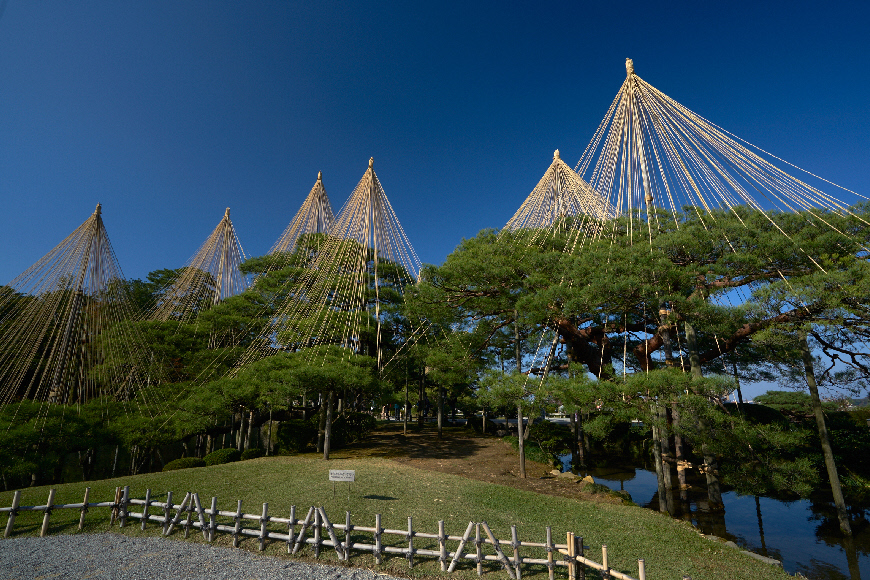
One of Japan's Three Most Beautiful Gardens Kenrokuen Garden is a beautiful Japanese garden with an area of 11.4 hectares located on the heights of the central part of Kanazawa and next to Kanazawa Castle. The Maeda family, who ruled the Kaga Clan (the present Ishikawa and Toyama areas) in feudal times, maintained the garden from generation to generation. From its scale and beauty, it is regarded as one of the most beautiful feudal lords' gardens in Japan. Kenrokuen Garden has a big artificial pond, and hills and houses are dotted in the garden. Visitors can appreciate the whole, dropping in at them. The big pond called "Kasumigaike" was compared to an open sea, and an island, on which an ageless hermit with miraculous power was believed to live, was constructed in the pond in hope of the long life and eternal prosperity of the lord. Kenrokuen, which means "having six factors", was given the name because of the six attributes that bring out the perfect landscape of the garden: spaciousness, tranquility, artifice, antiquity, water cources, and magnificent view from the garden. There is a stone lantern designed in the image of the Japanese koto (harp) by the pond, which becomes the symbol of Kenrokuen Garden. There is a fountain created using the natural pressure of water flowing from the higher pond. Visitors can enjoy the beauty of the flowers and trees, such as plum and cherry blossoms in spring, azaleas and irises early in summer, and colorful red and yellow leaves in autumn. Besides, visitors will have a glorious view of seasonal natural beauty including the snow-covered landscape with yukitsuri (literally means snow hanging), which is performed for approximately one month from November 1 every year. This is a method of protecting the branches of the pine trees in the garden with ropes attached in a conical array to the trees in order to prevent the branches from breaking. Address1-4 Kenroku-machi URLhttp://www.pref.ishikawa.jp/siro-niwa/kenrokuen/e/index.html Business Hours7 am to 6 pm (8 am to 5 pm from Oct. 16 toend of Feb.) Admission FeeAdult : 310 yen; person of 6 to 17 years old : 100 yen; person of 65 years old or over : Free (ID required)
1.Oyama Jinja Shrine
![]() 3.Route3
3.Route3
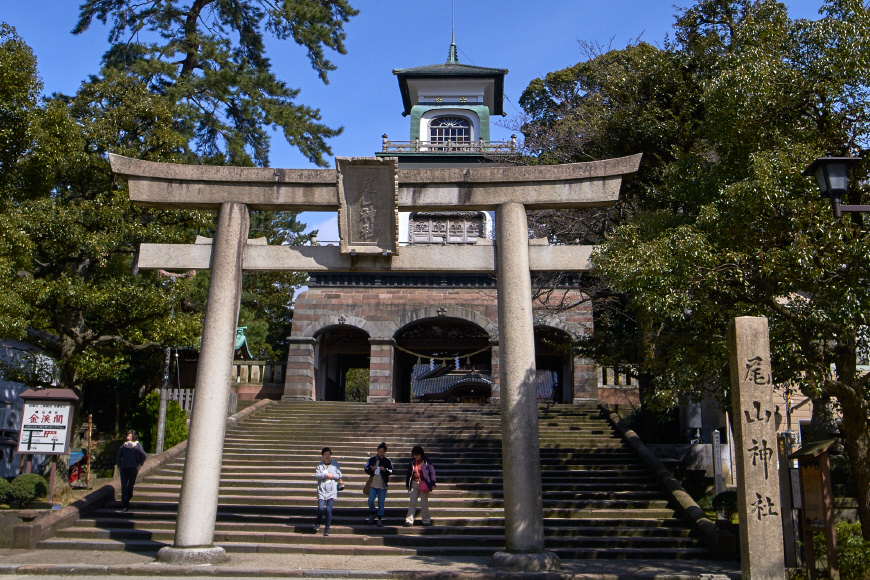
The shrine that enshrines Maeda Toshiie was moved to the present location in 1873. The main gate is a peculiar mix of traditional Japanese, Chinese, and European religious architectural elements. This gate, which was designated as Japan's important cultural assets, was completed in 1875. One of the highlights of Oyama Shrine is the garden in round-the-pond style with an artificial island and bridge in the images of old musical instruments, such as the biwa (Japanese short-necked fretted lute). Address11-1 Oyama-machi URLhttp://www.oyama-jinja.or.jp Business Hours9:00 am to 5 pm ClosedOpen 365 a year Admission Fee Adult: 550 yen; high school student: 400 yen; junior high school student and schoolchild: 250 yen; a 50 yen discount for a group of 20 or more people -->

The 21st Century Museum of Contemporary Art, Kanazawa as a new-style art museum different in image from conventional art museums was opened in October 2004. This art museum is round in shape as if it were the sight of a UFO that has touched down, all the walls are made of glass, and the building has five gates, which looks like a part opened in all street directions. The museum exhibits experiment-type contemporary arts that visitors can touch or sit on, and includes zones where visitors can enter free. Both adults and children can experience an excited time in the museum. Some of the highlights of the museum are commissioned works, i.e., arts integrated with the building structure. These arts include a work that enables visitors to feel as if they stand on the bottom of a swimming pool, the surface of a wall colored with flowers gathered from the suburbs of Kanazawa, and a room with an opening on the ceiling through which visitors can see the changes of the sky. The museum's shop offers a wide variety of products, such as original items in the image of the museum, accessories, and selected goods. Address1-2-1 Hirosaka URLhttp://www.kanazawa21.jp/en/ Business Hours10 am to 6 pm (closing at 8 pm on Fridays and Saturdays) ClosedMondays (Nexts day if Monday falls on a holiday), New Year holidays *Visitors can enter the free zone from 9 am to 10 pm everyday including Mondays. Admission FeefreeAround 1,000 yen (for the art museum zone including special exhibits and standing exhibits, and the fee varies with the special exhibition).
 2.Route2
2.Route2
5.Kaikaro Teahouse
![]() 2.Route2
2.Route2
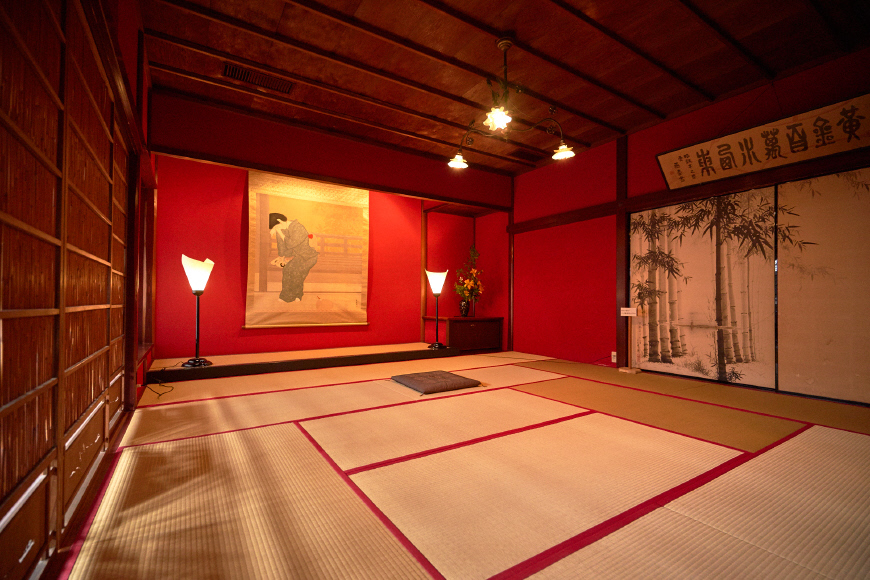
Kaikaro is a refurbished chaya house originally existed more than 180 years ago. The interior of the house includes vermilion-lacquered stairs, vegetable-dyed tatami (mats made of woven straw), fusuma-e (paintings on sliding-door panels) created by a contemporary artist, and a Japanese tearoom with tatami made of gold-laced woven straw, all of which have reproduced the atmosphere of the chaya house in those days with a contemporary feeling. Kaikaro offers a tea service around a sunken hearth, has a souvenir shop, and occasionally holds a guestroom experience time with geisha's attendance. Address1-14-8 Higashiyama URLhttp://www.kaikaro.jp/eng/ Business Hours9 am to 5 pm ClosedOpen 365 days a year Admission FeeAdult: 750 yenperson of 7 to 18 years old: 500 yenunder 6 years old: free * An extra charge is required for the tea service.
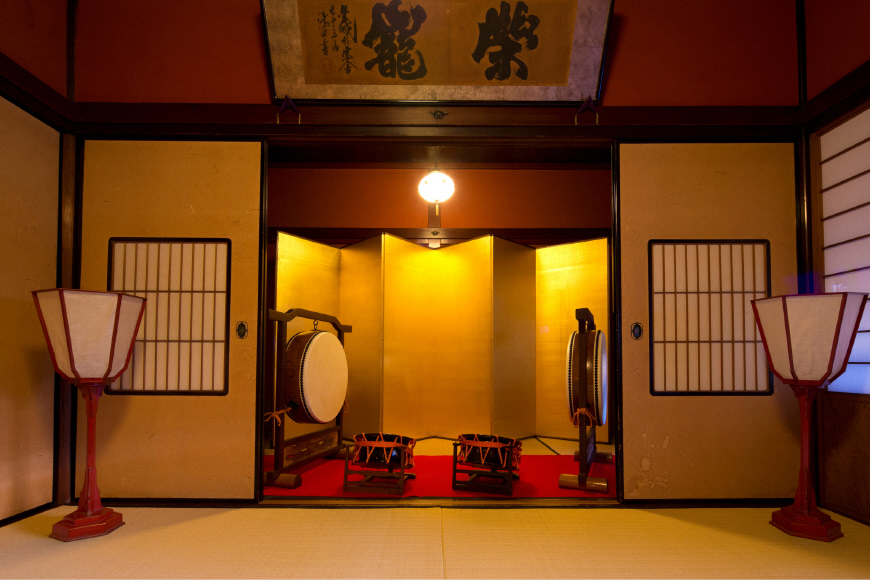
SHIMA is a chaya house built simultaneously with the construction of the Higashi Chaya district in 1820. This house is a precious chaya construction that has been designated as Japan's important cultural asset. The guestrooms and waiting room on the second floor with no closets, small courtyard, and other parts of the building that are used as a place of entertainment are stylish. A green tea service (with Japanese sweets) is offered at the courtyard. The Teahouse Culture Hall, which exhibits traditional musical instrument and tools used by geisha (traditional female Japanese entertainers), opened in the alley. (1-13-7 Higashiyama Tel. 252-0887; fax. 252-0883) Address1-13-21 Higashiyama URLhttp://www.ochaya-shima.com/english Business Hours9 am to 6 pm ClosedOpen 365 days a year Admission Fee Adult: 500 yenperson of 16 years old and below : 300 yen *An extra charge is required for the green tea service (with Japanese sweets).
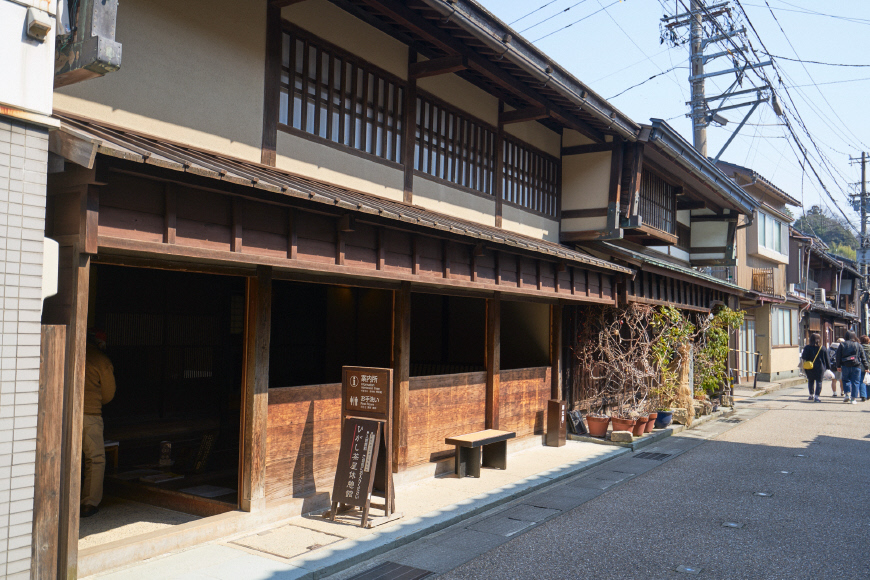
This rest station for tourists reproduces a town house of the latter half of the 19th century. Sightseeing volunteer guides stand by here, guide visitors (in Japanese only) around the Higashi Chaya district, and give information on local sightseeing spots. Address1-5-14 Higashiyama URLhttp://www.kaikaro.jp/eng/ --> Business Hours9 am to 5 pm ClosedOpen 365 days a year Admission FeeFree
1.Omi-cho Market
![]() 2.Route2
2.Route2

The Omi-cho Market was established about the middle of the 18th century. Since then, it has been supporting the gastronomic culture of Kanazawa for more than 280 years. There are as many as 170 stores including a large number of fish stores that sell fresh fish and seafood caught in the Sea of Japan, vegetable stores that sell unique Kaga vegetables, fruit stores, dried food and marine product stores, grocery stores, and clothing stores besides restaurants. Crabs, yellowtail, and small shrimp from the Sea of Japan that are sold around November, in particular, are highly evaluated in Japan. The market is crowded with residents and tourists during the season. More than 10 tenants including restaurants and drugstores are in operation in the redevelopment building named Omi-cho Ichibakan. AddressAokusa-machi and its vicinity Contact Omi-cho Market Promotion Association URLhttp://ohmicho-ichiba.com Business Hours9 am to 5:30 pm (varying with each store) ClosedNational holidays, Jan. 1 to 4, and around Aug. 15 Admission FeeFree -->
 1.Route1
1.Route1
1.Ohmi-cho Market
![]() 1.Route1
1.Route1
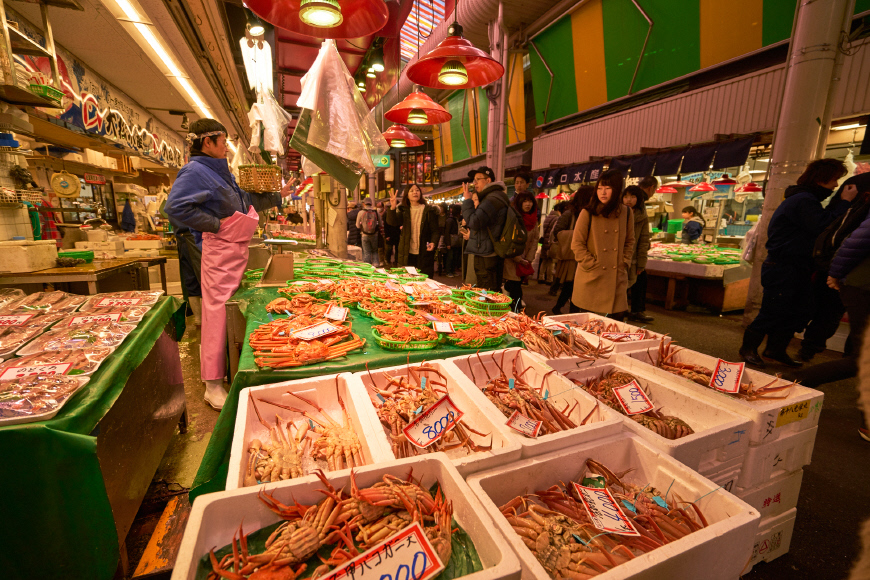
The Omi-cho Market was established about the middle of the 18th century. Since then, it has been supporting the gastronomic culture of Kanazawa for more than 280 years. There are as many as 170 stores including a large number of fish stores that sell fresh fish and seafood caught in the Sea of Japan, vegetable stores that sell unique Kaga vegetables, fruit stores, dried food and marine product stores, grocery stores, and clothing stores besides restaurants. Crabs, yellowtail, and small shrimp from the Sea of Japan that are sold around November, in particular, are highly evaluated in Japan. The market is crowded with residents and tourists during the season. More than 10 tenants including restaurants and drugstores are in operation in the redevelopment building named Omi-cho Ichibakan. AddressAokusa-machi and its vicinity Contact Omi-cho Market Promotion Association URLhttp://ohmicho-ichiba.com Business Hours9 am to 5:30 pm (varying with each store) ClosedNational holidays, Jan. 1 to 4, and around Aug. 15 Admission FeeFree -->
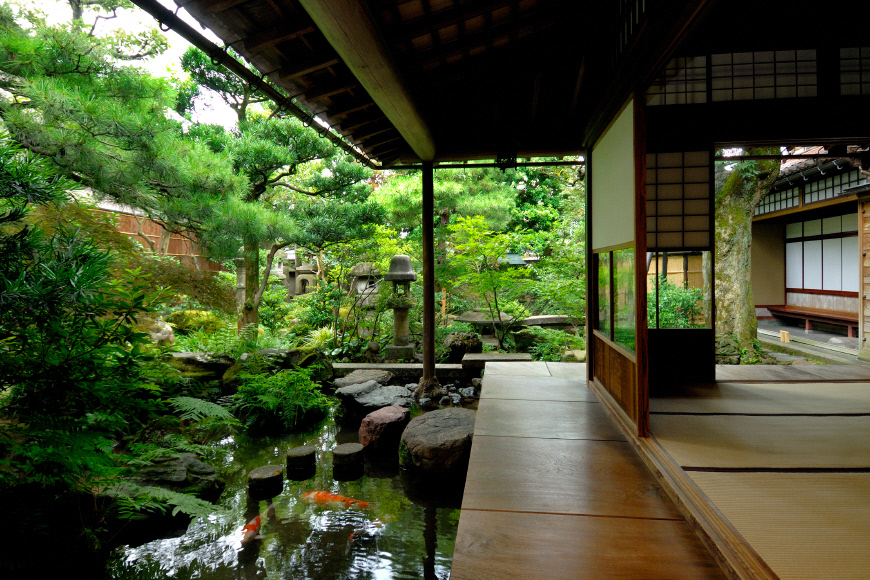
The remains of the Nomura family are also open to public. The family successively held executive posts from generation to generation under rule of the Maeda family. The house has a coffered ceiling totally made of Japanese cypress and fusuma-e (paintings on sliding-door panels) created by the Maeda family's personal painter. The garden inside the residence has a Japanese bayberry over 400 years old and a meandering stream surrounded by ancient and strangely shaped rocks. Address1-3-32 Naga-machi URLhttp://www.nomurake.com/ Business Hours8:30 am to 5:30 pm (until 4:30 pm from October to March) ClosedDec. 26 to 27 Admission Fee Adult: 550 yen; high school student: 400 yen; junior high school student and schoolchild: 250 yen; a 50 yen discount for a group of 20 or more people
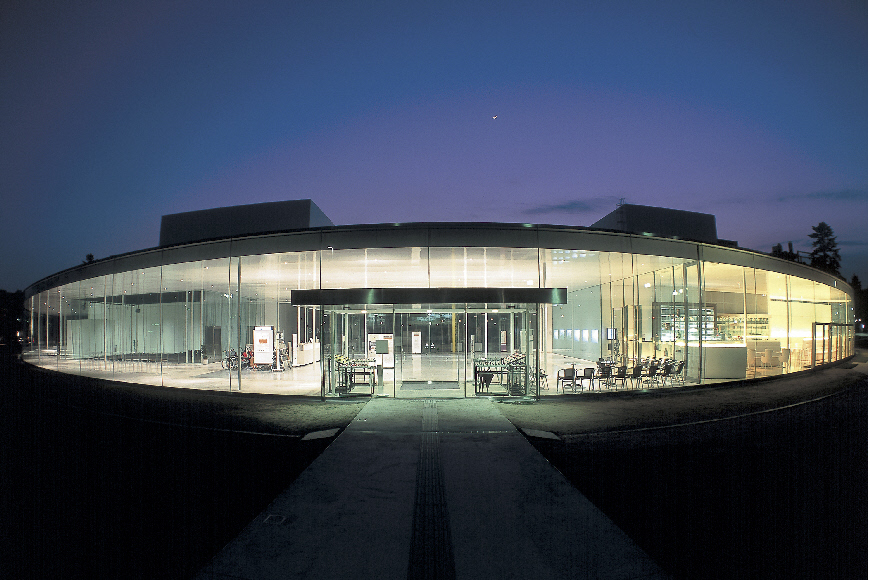
The 21st Century Museum of Contemporary Art, Kanazawa as a new-style art museum different in image from conventional art museums was opened in October 2004. This art museum is round in shape as if it were the sight of a UFO that has touched down, all the walls are made of glass, and the building has five gates, which looks like a part opened in all street directions. The museum exhibits experiment-type contemporary arts that visitors can touch or sit on, and includes zones where visitors can enter free. Both adults and children can experience an excited time in the museum. Some of the highlights of the museum are commissioned works, i.e., arts integrated with the building structure. These arts include a work that enables visitors to feel as if they stand on the bottom of a swimming pool, the surface of a wall colored with flowers gathered from the suburbs of Kanazawa, and a room with an opening on the ceiling through which visitors can see the changes of the sky. The museum's shop offers a wide variety of products, such as original items in the image of the museum, accessories, and selected goods. Address1-2-1 Hirosaka URLhttp://www.kanazawa21.jp/en/ Business Hours10 am to 6 pm (closing at 8 pm on Fridays and Saturdays) ClosedMondays (Nexts day if Monday falls on a holiday), New Year holidays *Visitors can enter the free zone from 9 am to 10 pm everyday including Mondays. Admission FeefreeAround 1,000 yen (for the art museum zone including special exhibits and standing exhibits, and the fee varies with the special exhibition).
2.Kanazawa Castle Park
![]() 1.Route1
1.Route1
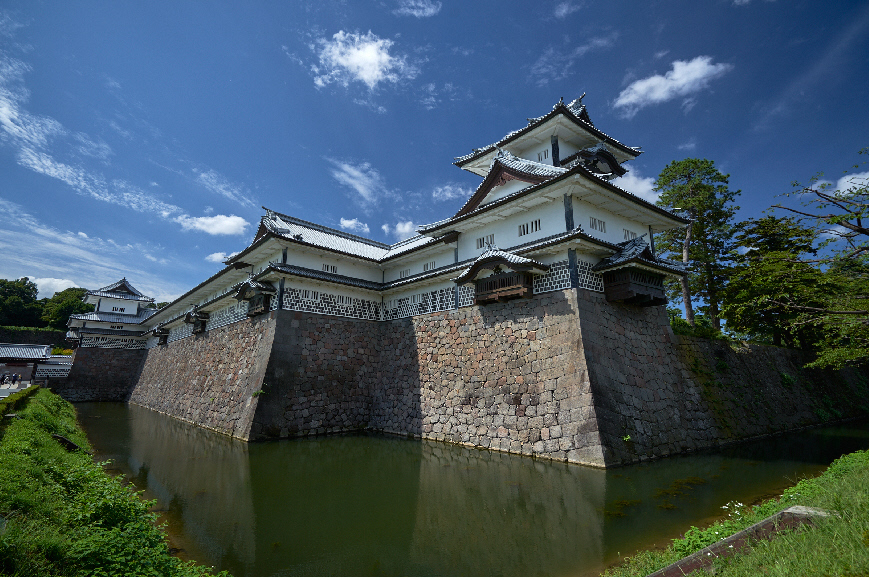
Ruins of Castle Where Maeda Family of Kaga Clan Resided In 1583, Lord Maeda Toshiie, who was Toyotomi Hideyoshi's first retainer, moved to Kanazawa. The Maeda family resided in Kanazawa Castle and governed the Kaga Clan (the present Ishikawa and Toyama areas) for more than 280 years henceforth. The castle tower was burned down by a fire in the past and has not been rebuilt, but other fortress buildings were reconstructed repeatedly. The Ishikawamon Gate, which was rebuilt in 1788, and the Sanjikken Nagaya (50-yard-long warehouse), which was rebuilt in 1858, still remain. Both of them have been designated as Japan's important cultural assets. The place was used as a base of the Japanese army. Later, Kanazawa University used it as a campus. The place was repaired in 1996, and the Hishiyagura (diamond-shaped turret), Gojikken Nagaya (90-yard-long warehouse), and Hashizumemon Tsuzuki Yagura (turret protecting the nearby gate) were restored and the park opened. In the time of the Maeda family, moats surrounded Kanazawa Castle. The castle had a fort function with loopholes for matchlocks on the outer wall to defend the castle from enemies. The beautiful white tiles that grace the roof are weathered lead and the wall is made of white mortar with flat tiles attached to it. The stone walls vary in type with each place, and it is apparent that the stonewalls were built in separate periods. The stone walls include those built more than 400 years ago. - Hishiyagura, Gojikken Nagaya, and Hashizumemon Tsuzuki Yagura The Hishiyagura (diamond-shaped turret), Gojikken Nagaya (90-yard-long warehouse), and Hashizumemon Tsuzuki Yagura (turret protecting the nearby gate) are large-scale wooden castle buildings reproducing the original sights of approximately 125 years ago. The turrets on the right and left to watch the gate are connected with the Gojikken Nagaya. The traditional construction method and the roles of the castle in those days are introduced in the buildings. - Kahokumon-gate The reconstruction of the Kahokumon-gate, which had disappeared 130 years ago, was completed in Japan's traditional construction methods based on historical facts. The Kahokumon-gate, which is virtually the main gate of Kanazawa Castle, is located down Kahokuzaka Hill past the Otemon-gate of Kanazawa Castle. The Kahokumon-gate, Ishiwakamon-gate, and Hashizume-mon gate are regarded as the three major gates of Kanazawa Castle. The interior of the gate is open to the public for free. - Gyokusen 'inmaru garden In 1634, the third lord of the Maeda family, who ruled the Kaga Clan (the present Ishikawa and Toyama areas) during the feudal times, started to construct the garden. Although it was destroyed at the end of the feudal times, the garden was reconstructed in 2015. Light-up : every Friday, Saturday and day before national holidays, starting after sunset until 9:00 pm Address1-1 Marunouchi URLhttp://www.pref.ishikawa.jp/siro-niwa/kanazawajou/e/index.html Business Hours7 am to 6 pm (8 am to 5 pm from Oct. 16 to end of Feb.) -Open 365 days a year Admission Feefree
 9.Start / Goal
9.Start / Goal
1.Kanazawa Station
![]() 9.Start / Goal
9.Start / Goal
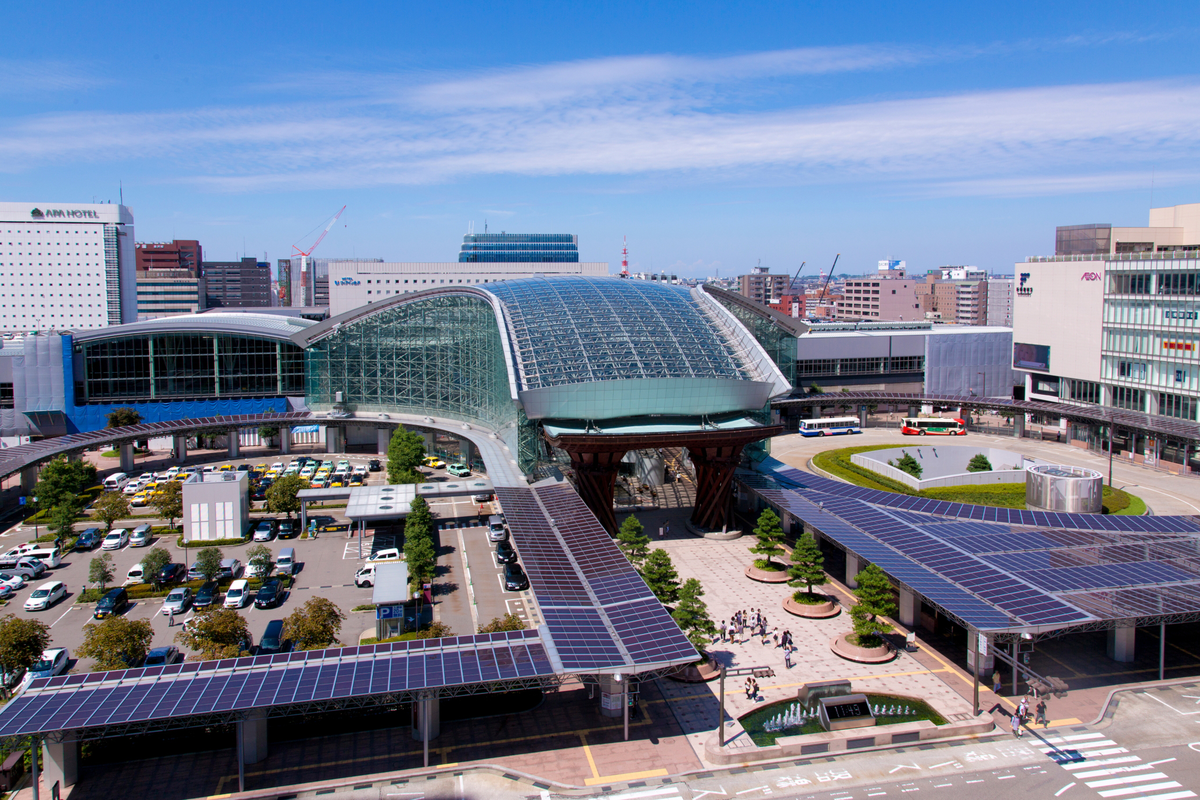
Kanazawa Station is JR West Railway's major station located in Kanazawa. The reconstruction of the surrounding area is still making progress for the extension of the Hokuriku Shinkansen (a bullet train) from Kanazawa to Osaka. There is a glass dome called "Motenashi (Welcome) Dome," which looks like a huge umbrella, at the east entrance of Kanazawa Station. The dome has a wooden gate called "Tsuzumi-mon," which symbolizes a traditional Japanese instrument called tsuzumi (hand drums). The underground of the dome serves as an information corner and event space. In recent years, the area has become a busier shopping quarter with the construction of large-sized shopping buildings. Address1-1 Kinoshinbo-machi
 8.Route8
8.Route8
3.D.T. Suzuki Museum
![]() 8.Route8
8.Route8

Daisetz Suzuki, known internationally as D.T. Suzuki, is a Kanazawa-produced buddhist philosopher. The museum building is located next to his place of birth, and comprises three wings: the Entrance Wing, the Exhibition Space Wing, and the Contemplation Space Wing, and three gardens: the Vestibule Garden, the Water Mirror Garden and the Roji Garden. In addition to the appreciation of the exhibits, the museum also serves as a place of reflection for visitors as they encounter the life and philosophy of Daisetz Suzuki. Address3-4-20 Honda-machi URLhttp://www.kanazawa-museum.jp/daisetz/english Business Hours9:30 am to 5 pm (Visitors must enter by 4:30 pm) ClosedMondays (Next day if Monday falls on a holiday) and Dec. 29 to Jan. 3, Preparation periods of exhibit change. Admission Fee Adult : 300 yen; group (20 persons min.) : 250 yen per person; person of 65 years old or over : 200 yen; person below high-school age : Free

The 21st Century Museum of Contemporary Art, Kanazawa as a new-style art museum different in image from conventional art museums was opened in October 2004. This art museum is round in shape as if it were the sight of a UFO that has touched down, all the walls are made of glass, and the building has five gates, which looks like a part opened in all street directions. The museum exhibits experiment-type contemporary arts that visitors can touch or sit on, and includes zones where visitors can enter free. Both adults and children can experience an excited time in the museum. Some of the highlights of the museum are commissioned works, i.e., arts integrated with the building structure. These arts include a work that enables visitors to feel as if they stand on the bottom of a swimming pool, the surface of a wall colored with flowers gathered from the suburbs of Kanazawa, and a room with an opening on the ceiling through which visitors can see the changes of the sky. The museum's shop offers a wide variety of products, such as original items in the image of the museum, accessories, and selected goods. Address1-2-1 Hirosaka URLhttp://www.kanazawa21.jp/en/ Business Hours10 am to 6 pm (closing at 8 pm on Fridays and Saturdays) ClosedMondays (Nexts day if Monday falls on a holiday), New Year holidays *Visitors can enter the free zone from 9 am to 10 pm everyday including Mondays. Admission FeefreeAround 1,000 yen (for the art museum zone including special exhibits and standing exhibits, and the fee varies with the special exhibition).
